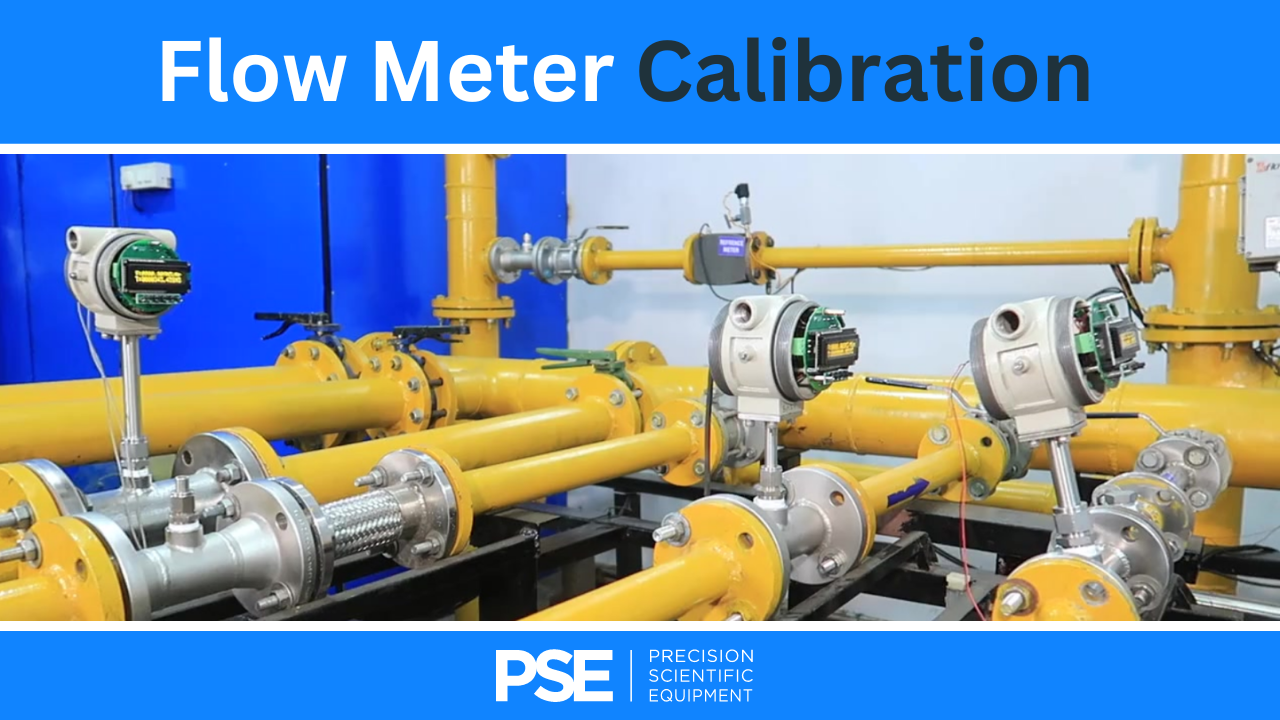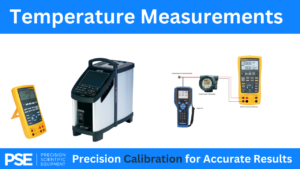Flow meter calibration is a crucial aspect of industrial operations, as it ensures the accuracy of the measurement readings. Flow meters are used to measure the flow rate of process fluids and gases in industrial facilities, and these measurements are used to monitor and regulate the speed and efficiency of industrial flow processes. This article will cover the following topics related to flow meter calibration: when to calibrate a flow meter, whether flow meters need to be calibrated, the calibration factor in a flow meter, the types of flow meters, the sensors used in a flow meter, and how to adjust a flow meter.
The Importance of Accurate Flow Meter Calibration in Industrial Processes
Flow meters play a crucial role in a variety of industrial processes, measuring the flow rate of fluids and gases in pipelines, orifices, or vessels. Accurate readings from flow meters are necessary for the effective monitoring and regulation of the speed and efficiency of these processes. In industries where precise measurements are critical, such as the Oil & Gas, Petrochemical, and manufacturing sectors, a small error in flow meter readings can have significant consequences.
That is why regular flow meter calibration is vital to ensure that readings remain accurate over time. The process involves comparing the flow meter’s readings to a predefined standard and adjusting the meter accordingly to conform to the standard. Calibration can be performed in-house by the manufacturer or at an independent calibration facility.
Inaccurate readings from a flow meter can lead to incorrect decisions, resulting in inefficiencies, safety issues, and even damage to equipment. Therefore, it is crucial to calibrate flow meters regularly and adjust them as necessary to maintain their accuracy.
Flow Meter Calibration vs. Recalibration
Flow meter calibration and recalibration are two distinct processes that are used to maintain the accuracy of flow meter readings in industrial settings.
Flow meter calibration is the initial step in setting up a flow meter for use. During this process, the readings of the flow meter are compared to a standard flow measurement device that operates under similar conditions. The scale of the flow meter is then adjusted to ensure that its readings align closely with those of the standard device. This is an essential step to ensure that the flow meter provides accurate readings from the outset.
On the other hand, flow meter recalibration is performed after the flow meter has been in use for some time. This procedure is necessary because industrial processes are dynamic and can cause the readings of the flow meter to deviate over time. As a result, periodic recalibration is required to ensure that the flow meter continues to provide accurate readings.
It is also worth mentioning that software tools can be utilized to verify the accuracy of measurements after flow meter calibration and recalibration. This additional step can provide added assurance that the flow meter is functioning correctly and providing accurate readings.
How to Calibrate a Flow Meter
Flow meter calibration is an important process in ensuring accurate measurements of fluid flow in various industrial applications. There are several widely-used methods for calibrating flow meters, each with its own set of procedures and benefits. Let’s take a closer look at three of the most common methods:
Master Meter Calibration: This method of calibration compares the readings of a flow meter under test to that of a calibrated flow meter, known as a “master” flow meter, operating at the desired flow standard. The master flow meter is usually a device whose calibration is set to a national or international standard. To perform a master meter calibration, the flow meter under test is placed in series with the master flow meter, and the readings of both are compared using a measured volume of liquid. The flow meter under test is then calibrated to conform to the master flow meter’s calibration.
Gravimetric Calibration: This method is known for being one of the most accurate and cost-effective volumetric and mass flow meter calibration procedures. It is ideal for liquid flow meter calibration in industries such as oil, water purification, and petrochemical. In a gravimetric calibration, an aliquot (small portion) of process fluid is placed in a test meter and weighed for a precise amount of time while it flows for 60 seconds. The weight of the test fluid is then obtained using a calibrated scale. The flow rate of the aliquot is calculated by dividing its volumetric weight by the test duration, and the flow meter is adjusted to the measured flow rate.
Piston Prover Calibration: This method involves forcing a known volume of fluid through a flow meter under test. The piston prover is a cylindrical device with a known internal diameter and contains a piston that produces volumetric flow by positive displacement. The piston prover method is ideal for calibrating ultrasonic flow meters, fuel flow meters, and turbine flow meters to a high degree of accuracy. To perform a piston prover calibration, an aliquot of process fluid is placed in both the piston prover and flow meter under test. The volume of fluid displaced in the piston prover is calculated by multiplying its internal diameter by the length traveled by the piston. This value is then compared to the measurement obtained from the flow meter and the flow meter’s calibration is adjusted accordingly.
Each of these calibration methods has its own set of procedures and benefits, and the most appropriate method to use will depend on the specific flow meter and application. Nevertheless, it’s important to regularly calibrate flow meters to ensure that accurate measurements are maintained over time.
When should I calibrate my flow meter?
As mentioned, a flow meter is an essential tool for measuring the flow rate of liquids, gases, and other fluids in various industrial processes. These devices are used in a range of industries, from oil and gas, to food and beverage production, to water treatment. However, it is not uncommon for flow meters to drift from their original calibration over time. That’s why it’s important to understand when to calibrate your flow meter.
One of the primary reasons to calibrate your flow meter is to ensure the accuracy of your readings. Over time, changes in temperature, pressure, and other environmental conditions can cause your flow meter readings to become less accurate. Calibrating your flow meter helps to ensure that it provides accurate and reliable readings, which is critical for making informed decisions about your industrial processes.
Another reason to calibrate your flow meter is to comply with regulatory requirements. Many industries have specific regulations that require flow meters to be calibrated regularly to ensure accuracy and reliability. Failure to comply with these regulations can result in fines and other penalties, so it’s important to stay up-to-date on the latest regulations and calibrate your flow meter accordingly.
Additionally, calibrating your flow meter can also help to extend its lifespan. Flow meters are exposed to a range of environmental conditions and substances that can cause wear and tear over time. Calibrating your flow meter can help to minimize this wear and tear and extend its lifespan, saving you money in the long run.
So, when should you calibrate your flow meter? The answer depends on the type of flow meter you have, the industry you are in, and the specific regulations that apply to your situation. Here are some general guidelines to help you determine when to calibrate your flow meter:
- Annually: For most industries, calibrating your flow meter once a year is a good starting point. This regular calibration will help to ensure that your flow meter continues to provide accurate and reliable readings over time.
- After major maintenance: If you have performed any major maintenance on your flow meter, it is a good idea to calibrate it after the maintenance is complete. This will help to ensure that the flow meter is still accurate and reliable after the maintenance.
- After environmental changes: If there have been any significant changes in the environmental conditions in which your flow meter operates, it may be necessary to calibrate it. For example, if there have been significant changes in temperature or pressure, calibrating your flow meter can help to ensure that it continues to provide accurate readings.
- After significant changes in the process: If there have been any significant changes in the process that your flow meter is measuring, it may be necessary to calibrate it. For example, if you have changed the type of fluid you are measuring, calibrating your flow meter can help to ensure that it continues to provide accurate readings.
Do flow meters need to be calibrated?
Yes, flow meters do need to be calibrated. Calibration is a necessary step in ensuring the accuracy of a flow meter’s readings. The process involves comparing the readings of the flow meter to a standard flow measurement device and adjusting the meter’s scale to be in close agreement with the standard. Calibration is performed periodically, as readings can change over time due to varying conditions in industrial processes. It is important to calibrate flow meters to ensure the validity and reliability of the data being gathered and used for decision-making purposes. The frequency of calibration depends on the type of flow meter, the fluid being measured, and the environment in which it is being used. Neglecting the calibration of flow meters can lead to incorrect measurement data and potentially costly mistakes.
What is the calibration factor in a flow meter?
The calibration factor in a flow meter is a numerical value used to adjust the flow meter’s readings to match a standard flow measurement device. The calibration factor is determined through the flow meter calibration process, which involves comparing the readings of the flow meter to the standard device and adjusting the factor until the readings are in close agreement. The calibration factor is specific to the flow meter and the conditions in which it is being used. It is used to convert the raw flow meter readings into a standard unit of measure, such as liters per minute or gallons per hour. The calibration factor is an important component in ensuring the accuracy and consistency of flow meter readings over time. Regular calibration and recalibration of flow meters is essential to maintain their accuracy and ensure that reliable data is being collected and used.
What are the types of flow meters?
Flow meters are devices used to measure the flow rate, velocity or volume of liquids, gases, and steam. There are several types of flow meters available in the market, including: positive displacement flow meters, velocity flow meters, and open channel flow meters. Some of the other types of flow meters are differential pressure flow meters, thermal flow meters, and magnetic flow meters. The type of flow meter to be used in an application depends on several factors, such as the fluid type, viscosity, flow range, temperature, and pressure.
Which sensor is used in a flow meter?
Different types of flow meters use different types of sensors to measure the flow rate. For example, positive displacement flow meters use mechanical sensors to measure the flow rate, whereas thermal flow meters use temperature sensors to measure the heat transfer between the fluid and a heating element. Velocity flow meters often use ultrasonic, vortex, or turbine sensors to measure the flow velocity. Magnetic flow meters use magnetic sensors to measure the change in magnetic field caused by the movement of a conductive fluid. The type of sensor used in a flow meter depends on the application, fluid type, flow range, and other factors.
What are the three types of flow meters?
The three main types of flow meters are positive displacement flow meters, velocity flow meters, and open channel flow meters. Positive displacement flow meters measure the flow rate by dividing the fluid into smaller volumes and measuring the time taken to fill those volumes. Velocity flow meters measure the flow rate by measuring the velocity of the fluid. Open channel flow meters measure the flow rate by measuring the height of fluid in an open channel. These three types of flow meters are used in various applications depending on the fluid type, flow range, temperature, and other factors.
How do you adjust a flow meter?
The method of adjusting a flow meter depends on the type of flow meter. For example, positive displacement flow meters can be adjusted by changing the size of the measuring chamber or the speed of the mechanical components. Velocity flow meters can be adjusted by changing the settings of the flow sensor or the calibration of the flow meter. Open channel flow meters can be adjusted by changing the height of the fluid level in the channel. The adjustment of a flow meter should be done by a trained professional who is familiar with the specific type of flow meter and its application. The calibration of a flow meter should also be checked and adjusted periodically to ensure accurate flow measurements.
Why choose us?
As a top producer of customized, engineered-to-order modular process skids, we have a reputation for providing exceptional quality products and services to the industrial sector. Our process equipment is crafted to the highest international standards, using only the best components to guarantee the highest level of precision. Our knowledgeable and experienced engineering team is available around the clock to provide technical support and consultation, giving you peace of mind when it comes to your investment.
If you’re interested in learning more about what we have to offer, feel free to reach out to us online or give us a call at +966-13-3614713. We are always ready and eager to help.



